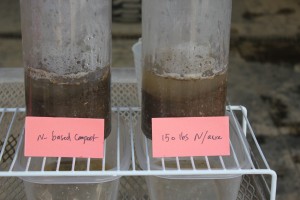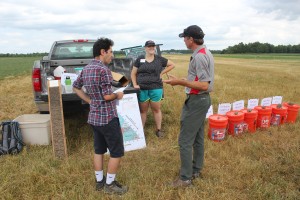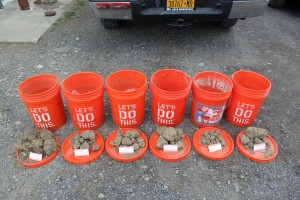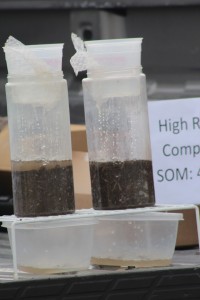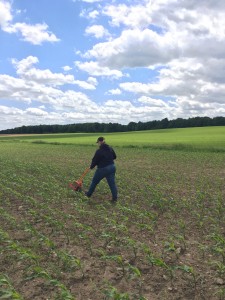A few weeks ago I had the opportunity to travel to London, Ohio with fellow intern Nicole to attend the North American Manure Expo. As we were approaching the end of our internships, it was a great time to get out of the office and connect with farmers and extension associates out-of-state.
Upon arriving at the expo, the first thing we did was venture to the equipment. Nicole and I are not from farming homes so we were wowed by the large tractors with tires taller than us! We were amazed by the size and power of the equipment. We spend a lot of time talking about spreading manure and different management practices, but it was neat to actually see the equipment that carries out these practices.
We then hopped on the bus to participate in the beef tour. One stop along the way was an organic beef farm. They have slats upon which they feed their cows, which was interesting to learn about as none of the farms I have seen in NY use slats. Slats are “flooring” under the pens which is constructed of slightly separated boards so manure can fall through the cracks and be collected underneath the pens.
After spending some time cooling off in the shade and hydrating, we hopped around to different sessions. One that really peaked my interest was a session promoting a new product that separates manure into clean water, solid pellets and a liquid byproduct. The latter two can be used as nutrient sources for growing crops while the water can be used to clean parlors, or even for animal consumption! The session was trying to sell the system to the farmers that were there, but it sparked my attention as systems such as these could make farms more sustainable if cost-effective. Finding the most efficient ways to use our resources and recycle nutrients is key in today’s agricultural systems so it was interesting to think about this systems’ potential in farms in NY.
We later ran into fellow Cornellian Jordi whose family has a dairy farm nearby. I went to tour the farm later that night. Jordi’s parents came to the US in 2002 from the Netherlands and have since built the farm from the bottom up and now manage a herd of 2000 Holsteins. Their farm operates with very low inputs and use their manure as direct fertilizer on fields after collecting sand to reuse for bedding. It was a really neat experience to actually experience the farm that Jordi has spent so much time telling us about!
Overall, I had a super fun time at the expo, and learned a lot through the sessions and even through visiting Jordi’s farm! It was a great way to start to bring my internship to a close as I could bring together what I learned this summer and see its applications. I had a really great summer in the NMSP and am excited to continue my work on the project this fall!

